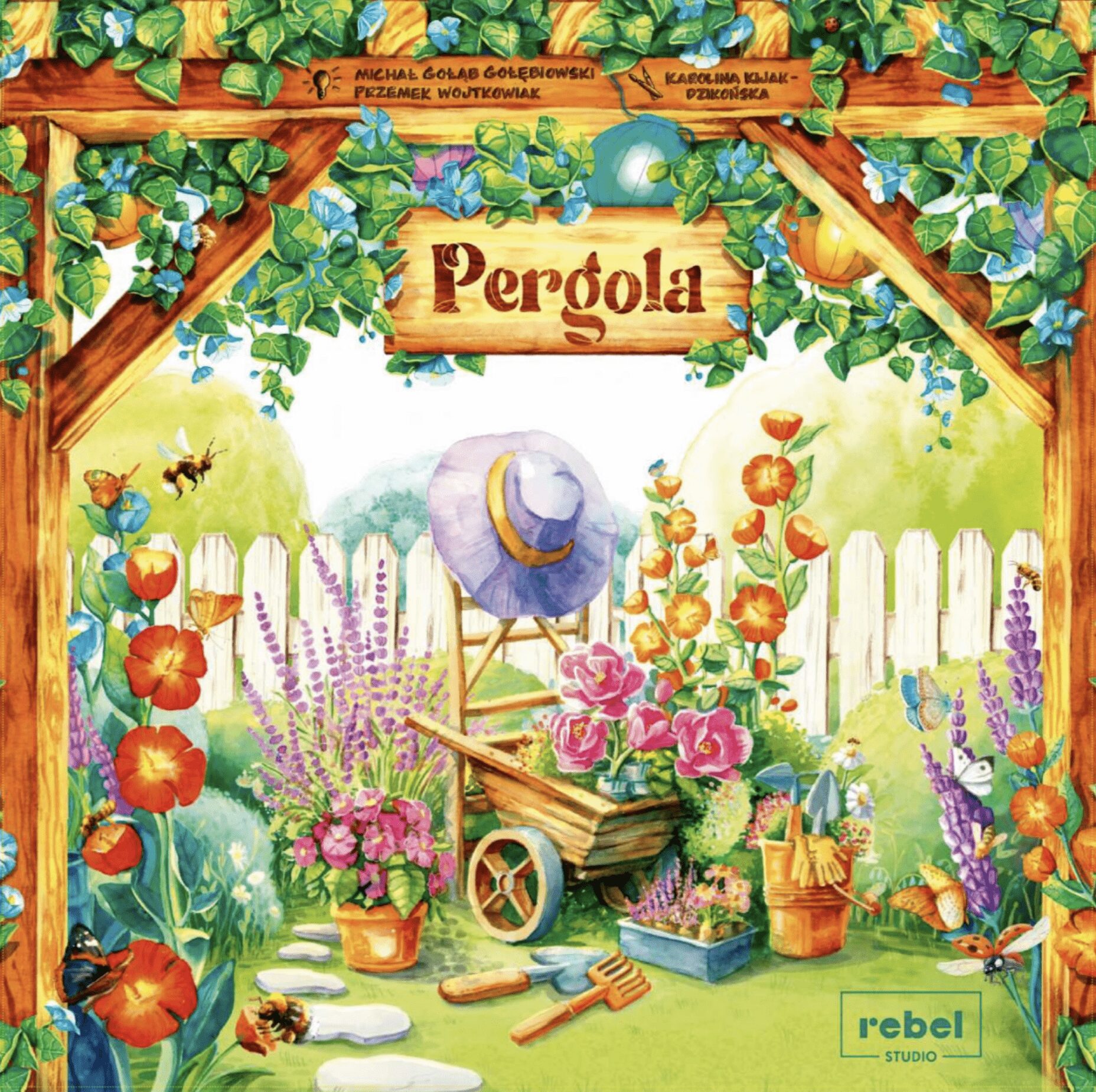Review copy kindly provided by Asmodee UK. Thoughts & opinions are my own.
“How many kinds of sweet flowers grow, in an English country garden?”. People my age who went to school in the UK might be familiar with the Jimmie Rogers song, and while it might not be the inspiration behind the new game Pergola, it definitely could have been. The game puts you in charge of creating a pretty, point-scoring garden. It does some tried and tested things from games down the years, but does them in a different way to bolster the sheer niceness that Pergola exudes.
The first clue that Pergola isn’t your ordinary Euro game is the player board. It comes in three parts: the pergola, the cascade, and the garden. The garden is the biggest part, and you’ll notice it has no markings on it. No spaces for workers or resources. No action spaces. No score track. No dual-layer progress tracks. Just a pretty picture of a garden.
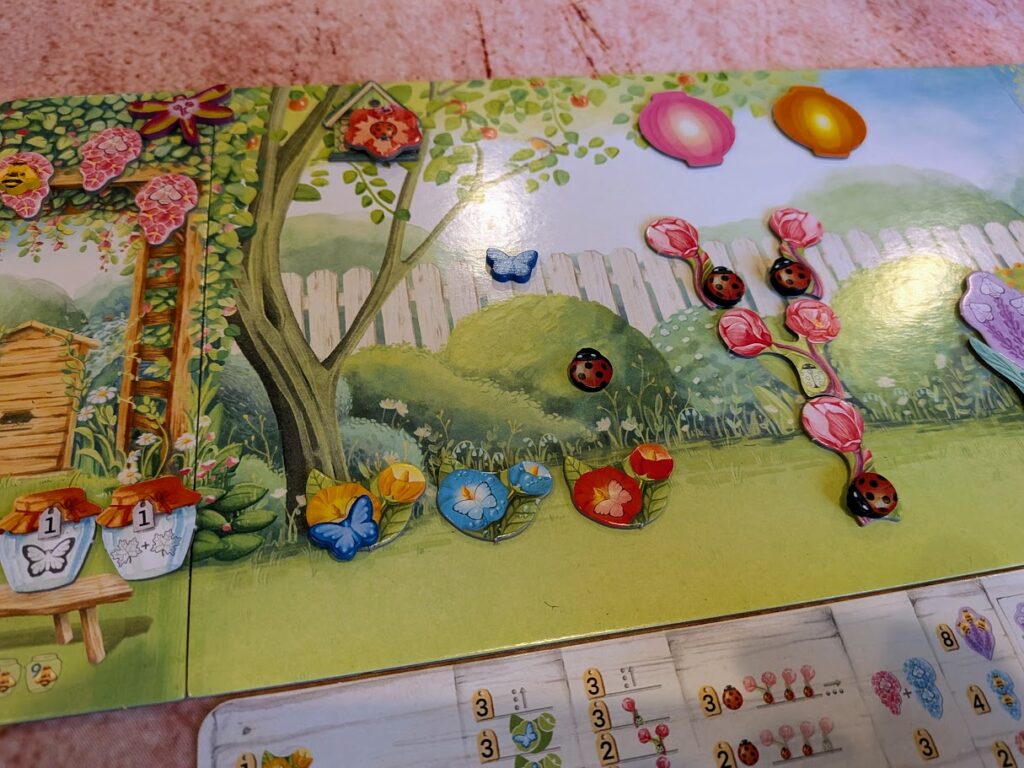
You see, Pergola is, at its heart, a set-collection game. The sets you collect are different kinds of flowers, sometimes adorned with insects, but when it comes to placing your sets, you just put them in the places that look nicest in your garden. Different coloured hollyhocks at either end of the garden? Go for it. You want the lavender under the tree? Do it your way, Titchmarsh. This might all sound a bit trite and trivial, but it matters.
Build me up, buttercup
Pergola is aimed firmly at the same part of the market that games like Wingspan have managed to worm themselves into over the last five or so years. Games that deliver something that gamers can enjoy while still making themselves feel welcoming and inclusive to people who’ve never played anything heavier than Pass the Pigs. If this sounds like you or someone you know, then Pergola might well be the game you’re looking for.
On your turn, you take a cardboard tool and put it in your little tool holder, gain the flowers or bugs shown on it, and choose where to put them on your boards. Then you take the action that was under the tool you picked, which might be moving a waterdrop down the cascade board, moving your frog around the lily pads, or taking a leaf.
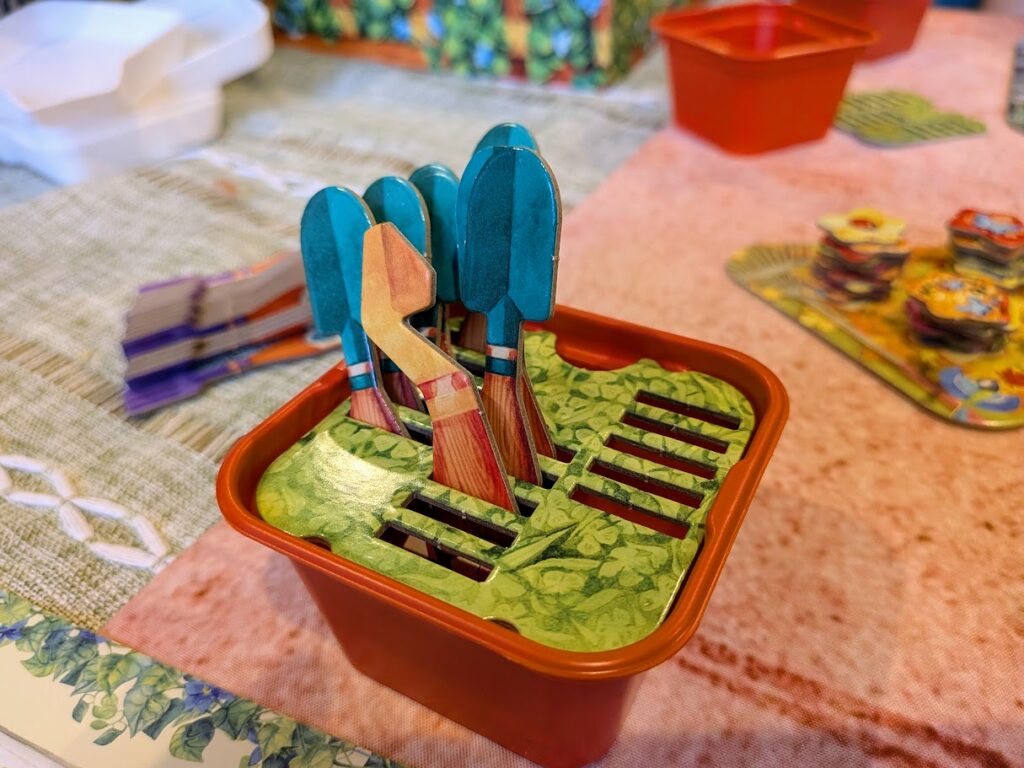
Even here, we’ve got another example of making the game friendlier. In any other game, you’d expect to take a card or a simple token to determine what you get in each turn. Instead, Rebel Studio (the publisher) has chosen to make four sets of different cardboard garden tools and include a plastic holder pot to stand them in. Overkill? Absolutely. But small things like this matter when it comes to breaking down barriers between gamers and casual players.
Bugging out
The set collection aspect is at the core of Pergola. We’ve seen it in countless games before, games I’ve covered here too, like Iki (review here), Tokaido (review here), and Spellbook (review here). These games are each great in their own ways, but they all cater for different tastes, and are maybe not as universally appealing as a theme to people approaching modern games for the first time. Building shops in old Japan while accommodating for fire protection (Iki) doesn’t seem like as light a proposition as growing some flowers.
What I like about Pergola is the way it adds in layers for players to get to grips with. These layers are represented by the different bugs available to collect. Take growing Magnolia trees, for example. You can only have one magnolia in your garden, and as it grows taller, it can fork and branch. When you gain ladybirds / ladybugs you can add them to the flowers in your magnolia. If you get a lot of ladybirds in the same row of flowers, it can be worth big points.
Bees act similarly. You can add bees to the buttercups in your pergola and get points, or you could add them to lavender plants. One bee on a small buttercup nets you 2 VPs. Two bees on a large buttercup will earn you 4 VPs. Get three bees on a lavender plant, though, and you get 8 VPs. For casual players, just choosing to put the bees on the flowers you like will still get you points, and will still give you a score which feels like you’re in contention with the other players around the table, and that’s great. What this does is open new players’ minds to these kinds of decisions. The kinds of decisions that modern Euro games throw in your lap at every turn.
Oh, and British (I’m assuming it’s a British thing) people, the buttercups are the pink and blue flowers. No, I don’t know why they’re not the yellow flowers we all know and used at primary school to test whether people liked butter either.
Overproduced?
We reach the part of the review where for many other games I might be lamenting the amount of overproduction that’s gone into a game. I don’t usually like it when publishers overdo the production of a game for seemingly no reason other than ‘because we can’, especially when it comes at the expense of box size and price. So when you punch and sort Pergola and see the Gametrayz insert with holders for all the tokens, the pot for the tools, and even an individual plastic flowerpot for each player’s pieces, you’d think I’d be annoyed with it. But I’m not.
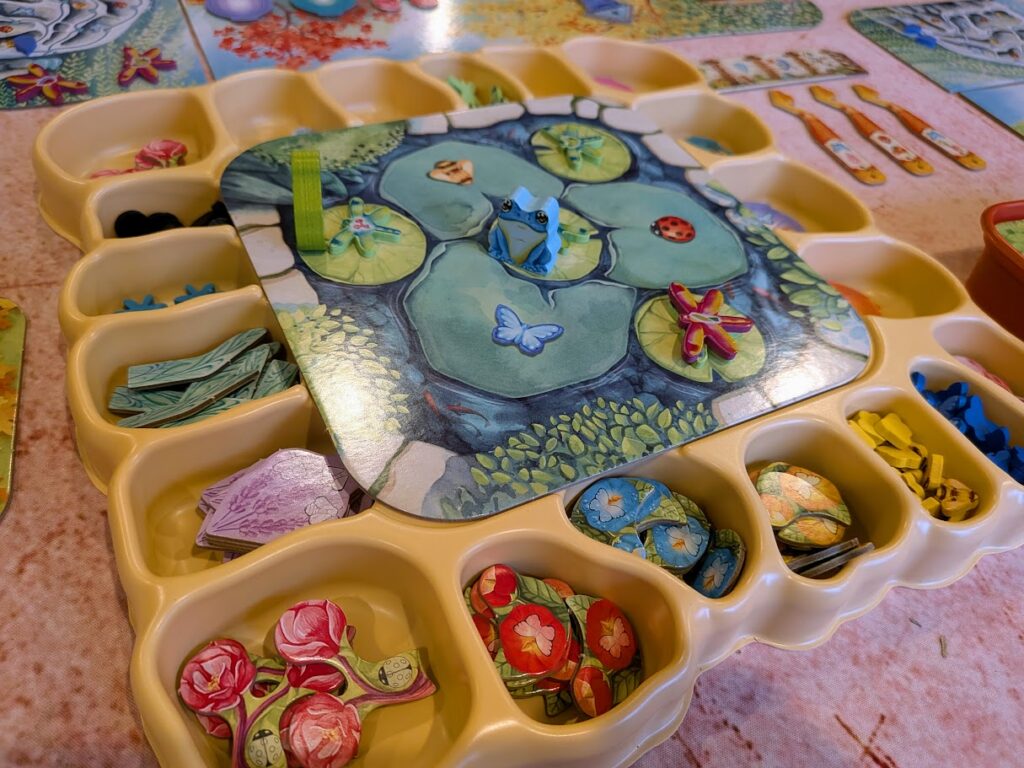
The cuteness. The toy factor. The charm. All of the nonsense that goes along with the plastic bits in the box of Pergola all help with its adoption by light gamers and non-gamers. It all matters. The box isn’t a ridiculous size, it’s your bog-standard 30cm x 30cm kallax-friendly box. So that’s good. The crazy thing, though, is that the game only costs about £30. It might not be a mini-heavy game, or one with double-layer boards, but there’s still a decent amount of really high quality pieces in the box. It’s a bit of a bargain for full-size games at this lighter end of the spectrum.
Final thoughts
I think the biggest compliment I can give Pergola is that it’s nice. Everything about it is nice. The pieces are nice, the theme is nice, the rules are nice and easy to understand. It’s just a pleasant time playing it. And I say that as someone who revels in brain-burning heavy Euros. I really like playing Pergola. Would I take it along as my game of choice to my Monday night heavy games group? Probably not. Would I play it with my family? Would I play it at a convention at the end of the day? Would I take it to the games night at the local board game café? Yes, yes, and yes again.
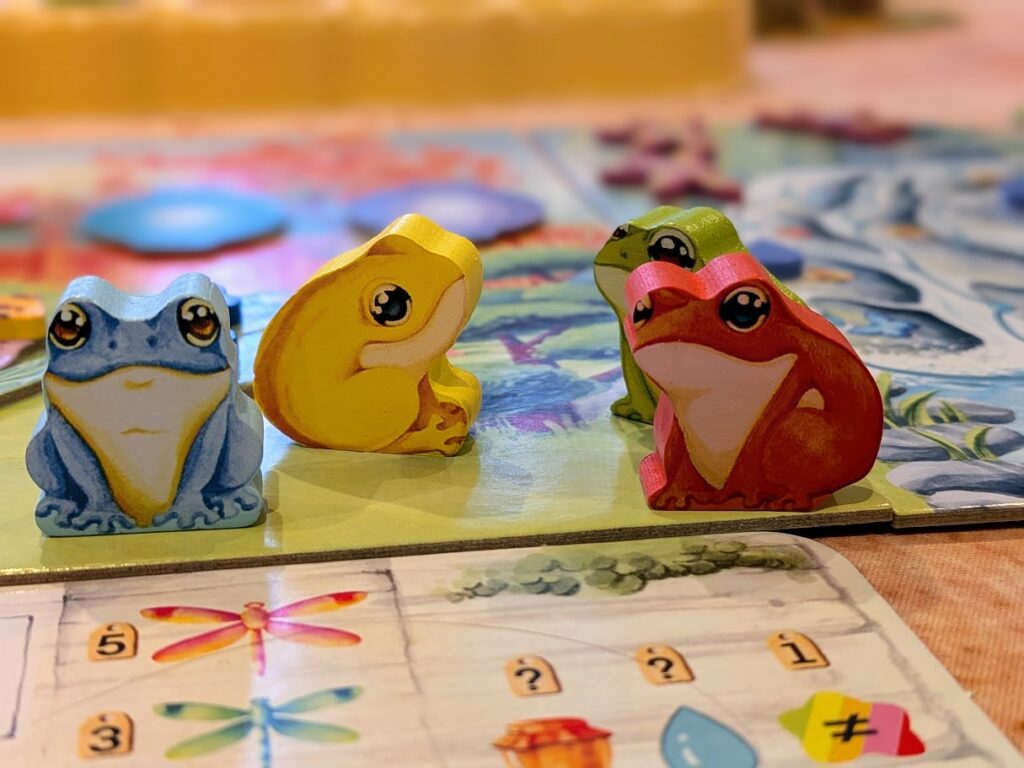
You don’t hear the term ‘Gateway Game’ bandied about as much as it used to be, but that’s exactly what Pergola is. It does the same job as games like Carcassonne, Ticket to Ride, Azul, Flamecraft and plenty of others have done before it. It offers a friendly, approachable, non-nerdy hand out to people unsure of their first steps into modern board games. There’s still plenty to let your brain chew over if you like your games on the meatier side, but there’s no denying that this is a game for fans of lighter games. Pergola is a game I could get my mum to play, and there aren’t many games in my collection that I could say the same about.
If you’re looking for a quick, pretty, light-hearted game that you can play with just about anybody, Pergola fits the bill. The scores give the appearance of being close, even if somebody doesn’t really get it properly, and that’s as important as anything else when it comes to enticing people back to your place for another games night. Check it out. It won’t blow your socks off, but I don’t think you’ll be disappointed either.
Enjoying this article? Consider supporting me.
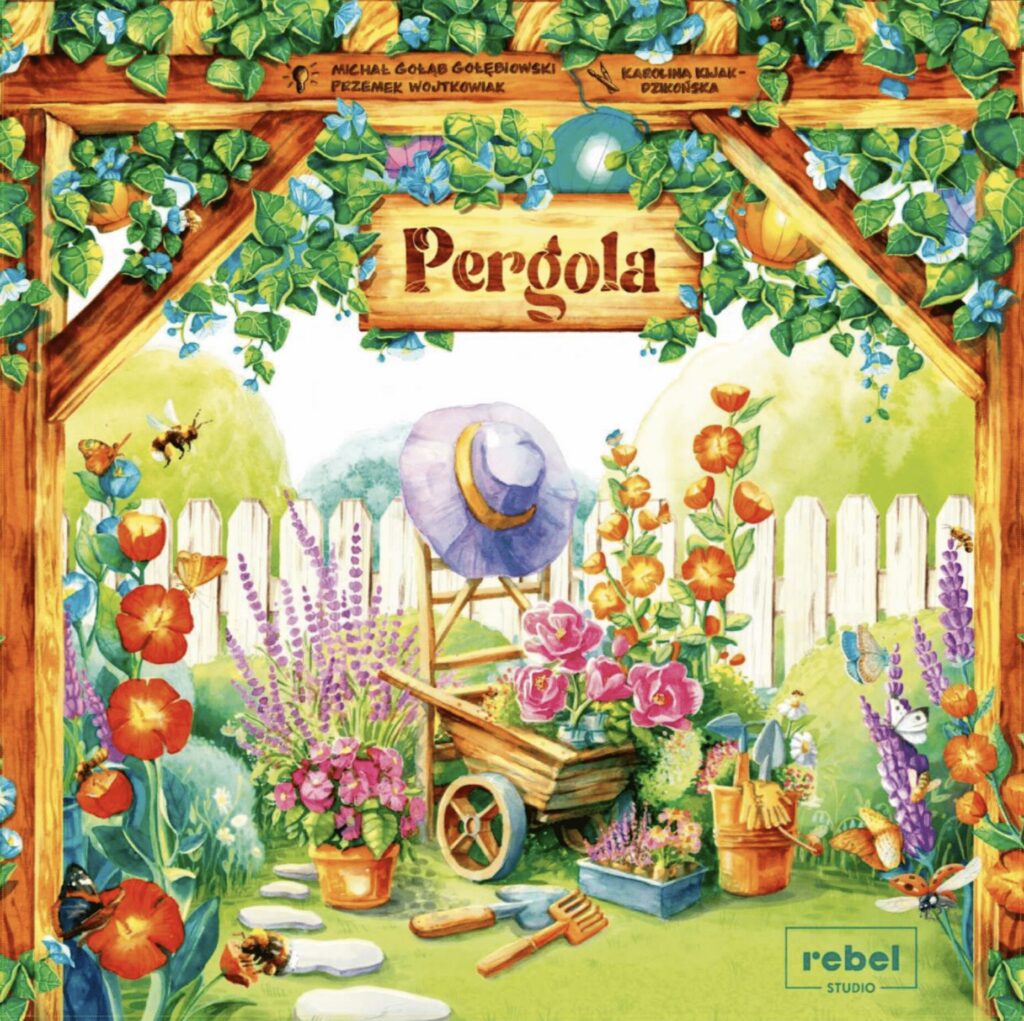
Pergola (2025)
Design: Michał Gołąb Gołębiowski, Przemek Wojtkowiak
Publisher: Rebel Studio
Art: Karolina Kijak
Players: 1-4
Playing time: 45-60 mins
